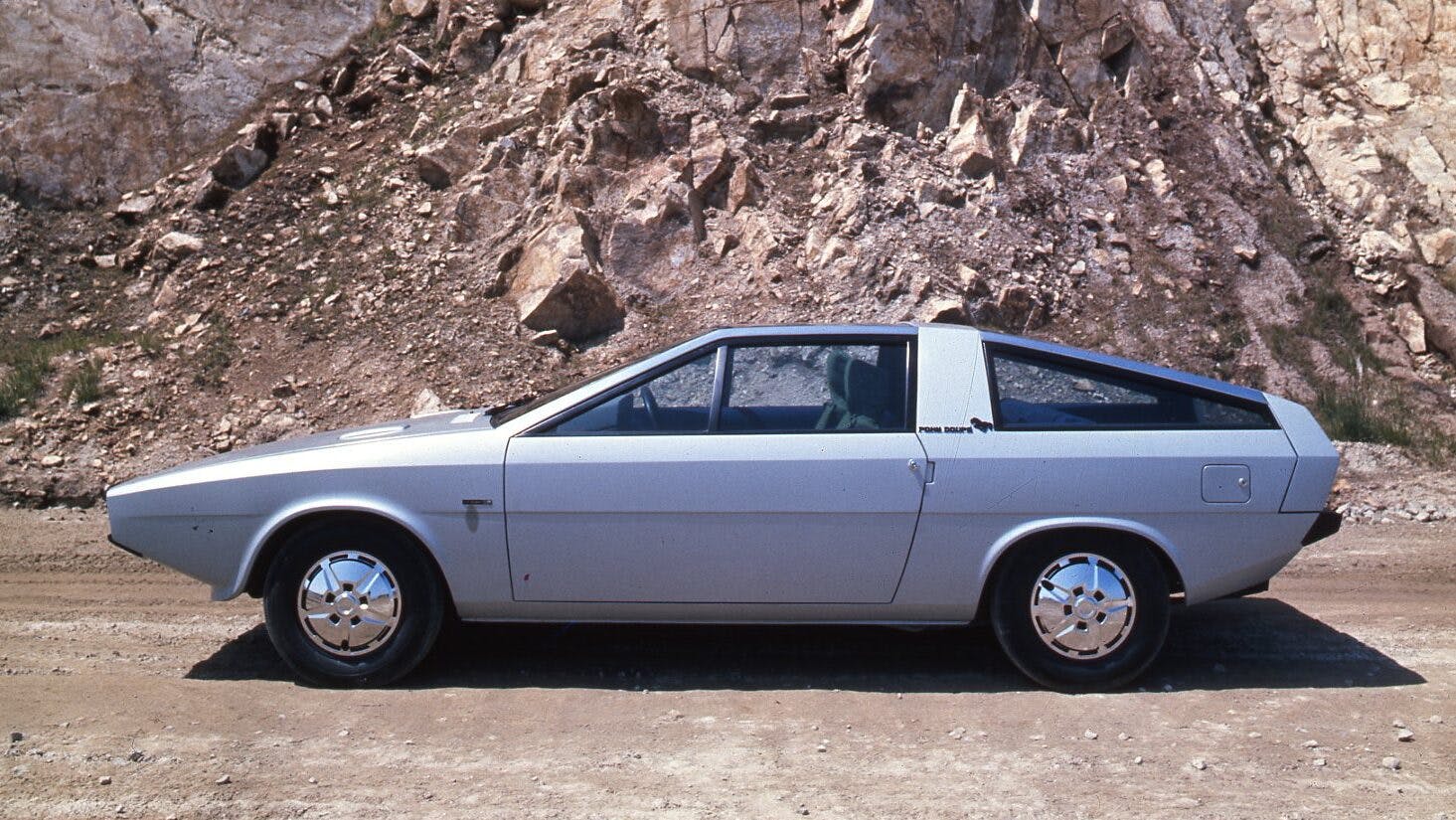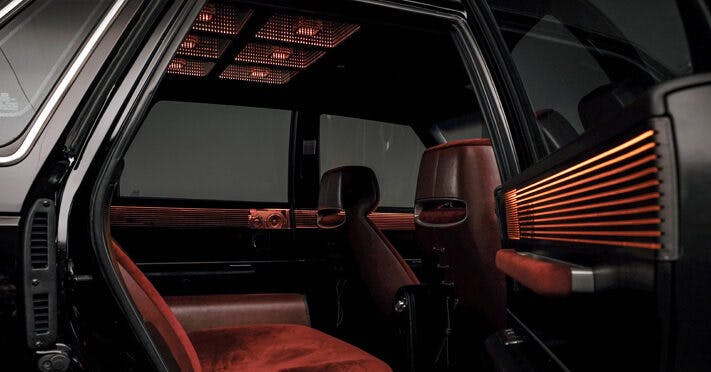Media | Articles
Vellum Venom Vignette: When Hyundai sliced itself a wedge of Pony history

Being true to one’s self is something all of us should keep in mind, especially in this era of social media influencing and Silicon Valley overselling. When an automaker lives out this axiom, you can tell: Think of Ford’s proud parent vibes for the Model T, VW’s very public “Ode to the Bug,” or Porsche’s endless love for the vehicle that put (kept?) it on the map.
Hyundai’s interaction with its past is a little different. While the company has a rich history, we Americans didn’t even get a taste until the months leading up to South Korea’s successful fight for democracy—a fight that included rank-and-file Hyundai employees seeking a more perfect union. I hope it’s not disingenuous to suggest that the history of the Hyundai Motor Company is intertwined with that of South Korea itself. No matter, history is worth saving, and Hyundai has many stories to tell.
One is Hyundai’s honest assessment of its limitations, as it partnered with Italy’s own Giorgetto Giugiaro. The collaboration put Hyundai on the map. Unlike Japan’s relative indifference to design in the ’60s and ’70s, the uniquely logical, minimalist modes of transportation Hyundai made for developing nations are downright revolutionary.
Maybe even explosive in its influence, as this commercial suggests:
Enter the 1975 Hyundai Pony, with a rather authoritarian-sounding advertisement. Lest my blatant ignorance of the Korean language/culture become too obvious, let’s motor on: The Pony wasn’t a single car. Rather, like Henry Ford’s beloved Tin Lizzy, one nameplate represented a family of body styles. Variants of Pony included a three-door hatchback, a sedan, a station wagon, and even an El Camino–style truck.
Marketplace
Buy and sell classics with confidence
The Pony may not be beautiful to your eyes, but it put a lot of people on the road. And it possessed a logical and well-organized design worthy of a Giugiaro product. This level of insight is even more impressive considering Hyundai’s top brass (and the Italian design house, by extension) had to work within the confines of a authoritarian regime, however benevolent and growth-focused.
But what if you let Giugiaro run wild with a Pony donor car, so he can design a flagship sporting coupe with all the latest styling trends (of the mid 1970s)? Hyundai did exactly that, resulting in the low-slung, wedge-shaped, proto-DeLorean Pony Coupe of 1974. The concept car made its debut at the Turin Motor Show that same year, but was mothballed due to, in Hyundai’s words, “adverse global economic conditions.”
Now “lost to history,” it was presumably stored in a location not worthy of its future relevance to the corporation. Shame.
Luckily, modern Hyundai has a rather keen love affair with history. It has restomodded two “Heritage” vehicles, one a Pony hatchback and the other a flagship Grandeur sedan. Each creation proves a multi-national corporation can have the heart of a museum curator. Cars are art, and they deserve to be revered like any form of creative expression. It was only a matter of time before the 1974 Pony Coupe joined these two masterpieces in a museum dedicated to Hyundai’s triumphs.
We heard that Hyundai would join forces with Giugiaro to rebuild the 1974 coupe last year, and the result looks like a dream come true. Hyundai unveiled the Pony Coupe concept at 2023’s Hyundai Reunion, roughly 50 years after the original concept made its debut at the aforementioned Turin Motor Show.
Embracing your design history is one thing, but I’m not delusional enough to believe Hyundai recreated the 1974 Pony Coupe to delight design geeks and in-house archivists. It’s also a branding exercise, similar to Mazda’s restoration of the MX-81 concept by Bertone. Hyundai, however, has opened its wallets even wider than Mazda did to build something from a donor Pony and not a mothballed auto show relic.
Clearly, all this money is gonna be used to dovetail into something else.
The logical next step is to introduce a new coupe with that 1974 template in mind. Hyundai already made the Ioniq 5 as a rolling tribute to the Pony, but if something like the N Vision 74 concept sports car comes to fruition, souls will be set ablaze. Pair a production version of the 74 with Hyundai’s N performance badge, and Hyundai could rekindle the same sort of flame Ford did in 2005. Hyundai’s retro-performance car wouldn’t resonate in America to the same degree as the Ford GT—but in other countries, ones with less established automotive heritage than America? Not every nation was exposed to muscle cars, fuselage bodies, tailfins, and decadent proportioning 50 or 60 years ago.

Hyundai’s reverence for the past has already worked, in my opinion; I can’t stop drawing parallels between the company’s modern EV design language and that of modern architecture.
Hyundai should be proud of its design fortitude, which has been evident since Day One. Good design isn’t cheap and is rarely appreciated across an organization. Hyundai has been true to itself, as this reincarnated 1974 Pony Coupe further proves. The car hews as close to its maker’s legacy as a Ford truck, a Porsche 911, a VW Beetle, or a Hemi-powered Chrysler. We should thank our lucky stars that Hyundai never forgot where it came from, because it will take us somewhere truly special.
***
Check out the Hagerty Media homepage so you don’t miss a single story, or better yet, bookmark it. To get our best stories delivered right to your inbox, subscribe to our newsletters.




























Forget the Ioniq 6. If Hyundai came out with an electric version of the prototype Pony I would buy it tomorrow. Please call me out on it Hyundai.
Except I like the Ioniq 6, at least in photos. It’s more of a Chrysler Airflow than Chrysler’s upcoming Airflow EV ever could be.
Go see it in person. The problem is the rear end. It’s fussy and cluttered, anything but streamline. Being a huge fan of streamline design, I was literally ready to plunk down the check when they became available. But seeing them live, I can only imagine getting one in black so all the stuff in the back becomes less apparent. It’s really a mess back there in white.
You have made me sad, and yet somehow more excited to see one for myself!
License the Ginuwine track (Riding my Pony). Own the history fully, don’t try to rebrand.
Style the ads with a Tokyo Drift (salon spec, etc. depending on your locale) early 2000s tuner scene vibe. Run a tagline on the campaign like “You Get it, even if you get this” and show the silly optioned version modded up and contrast it with a tasteful but still not bland average model.
Offer a colour palette with memorable names “rebel yellow, race shoe red, black parade, bacon beige, etc.” and market them “Don’t buy a boring grey CUV, get into a Python Green Pony sport sedan!”
Price it so college and early workforce people can get in them (the fun looking variants).
Recognizing that not everyone wants a big vehicle (or can afford to run one) and that someone is going to make small cars cool again.
The “cars are just an appliance” argument ignores the fact that their is prestige in what appliance you have. Mercedes is moving up market and more prestige –Hyundai can conquer the lowlands. Make them fun, memorable and value for the $.
If anyone could ever have the nerve to sell another small car in America (cheap, not a Mini) it would be Hyundai. Too bad safety (i.e. cost) regulations are killing small cars in many places, not just America. America just makes the problem worse with cheap (usually) gas.
I have friends that work on Hyundai’s and one that works for Hyundai. Both have made good money off their products and not in a good way. One has changed many blown engines for customers and the other has told me night mare issue on these cars new from the dealer. The one even for gone his discount and bought another brand.
Often you get what you pay for and the lower prices they have offered over the years came at a price.
Another had a Santa Fe that was nothing but trouble interior wise.
As for small cars they are just down sizing cars today. What was a mid size car is now a small car but still called mid sized. Cars like a Malibu are only a shadow of the car they once were.
Today they call a small car something that is very small. They are not quite micro car but close. As for those the little savings is not worth my life in a crash. I would never recover if I put a family member in a small car and were killed.
I personally think the N Vision 74 looks interesting and would be very interesting with a combustion motor running on gas. Every so often I get either DeLorean or Isuzu Impulse vibes from the silver cars in various shots.
I WANT A NIXIE TUBE DASH BOARD NOW!!!!! Things you didn’t know you needed till you saw it.
Ain’t that the truth!
Did Giugiaro design the Isuzu Impulse? Lots of similarities I see.
Indeed he did!
Looks like a cross between a Tesla Cybertruck and a Delorean, neither of which are anything to get too awfully excited about.